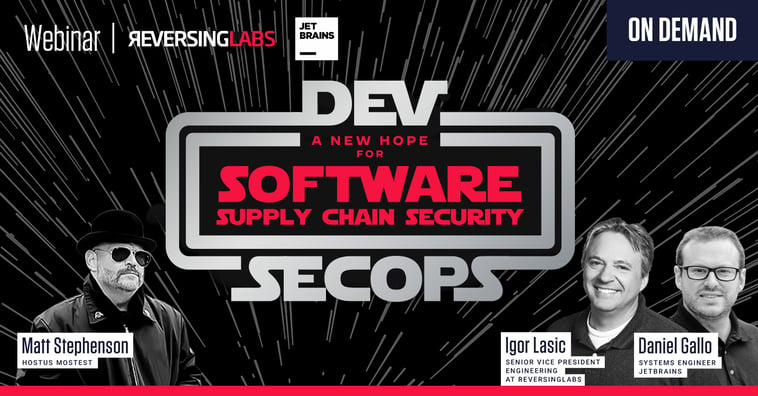What is DevSecOps?
DevSecOps is a set of principles and practices that advocates for the seamless integration of security measures across development, security, and operations, into every phase of the software development lifecycle. This holistic approach ensures that security is not an afterthought but a fundamental aspect of the development process.
DevSecOps promotes collaboration between developers, security specialists, and operations teams, fostering a culture of shared responsibility for building efficient and highly secure software.
Why is understanding DevSecOps important?
Understanding DevSecOps is crucial given the rapid pace of software development today. Integrating security testing from the beginning, DevSecOps helps organizations proactively identify and mitigate vulnerabilities, reducing the risk of security breaches. This approach enhances software reliability and trust, safeguarding an organization's reputation and customer trust.
Different types of DevSecOps usages
DevSecOps practices can manifest in various ways, tailored to their needs and constraints. Some common types of DevSecOps usage includes:
Continuous Integration/Continuous Deployment (CI/CD): CI/CD forms the backbone of modern software development. Within the DevSecOps framework, these practices extend beyond automating the build and deployment processes. They also encompass the crucial aspect of automating security checks. In CI/CD pipelines, security checks are seamlessly integrated at various stages, allowing teams to detect vulnerabilities in code and configurations as changes are made. This real-time feedback loop empowers developers to address security issues promptly, reducing the likelihood of deploying vulnerable software. By automating security checks in the CI/CD pipeline, organizations can ensure that their applications are more resilient against evolving threats.
Threat modeling: Threat modeling is a proactive approach to security that involves identifying and assessing potential security risks during the early stages of development. The structured process helps teams anticipate and understand potential threats and vulnerabilities. In DevSecOps, threat modeling takes center stage, guiding the development process. Teams scrutinize the system's architecture, identifying potential weak points and entry points for attackers. With this insight, they can design countermeasures and security controls to thwart potential threats. Threat modeling is a crucial practice for building security into the very foundation of an application, minimizing the need for reactive security measures down the line.
Secure coding standards: Writing secure code is a cornerstone of DevSecOps. Secure coding standards involve implementing guidelines and best practices emphasizing security during the coding process. These standards cover various topics, including input validation, authentication, and data encryption. By adhering to secure coding standards, developers reduce the likelihood of introducing vulnerabilities into the codebase. Consistently following these standards ensures that security is not an afterthought but an integral part of the development process. This proactive approach minimizes the risk of security breaches from common coding mistakes.
Container security: Containers and microservices have revolutionized software development and deployment. However, they also introduce unique security challenges. DevSecOps addresses these challenges through rigorous container security practices. Container security involves thorough scanning and monitoring of container images and orchestration platforms. Security scans are performed to identify vulnerabilities within container images, while continuous monitoring ensures that containers remain secure throughout their lifecycle. By prioritizing container security, DevSecOps ensures that applications built on containerized architectures remain resilient in the face of emerging threats.
Security as Code: Security as Code is a paradigm shift in managing security within the DevSecOps framework. It involves treating security configurations, policies, and checks as code artifacts that can be versioned, tested, and automated. Organizations can automate security testing and compliance checks by treating security as code. Security policies and configurations can be defined in code, ensuring they are consistently applied across development, testing, and production environments. This approach fosters consistency and reduces the potential for configuration drift that can lead to security vulnerabilities.
Business benefits of DevSecOps
Improved security posture: Enhanced security measures lead to reduced vulnerabilities and lower security risks.
Faster time to market: Automation and streamlined processes accelerate software development and deployment.
Cost savings: Early identification and mitigation of security issues result in lower remediation costs.
Compliance and governance: Meeting regulatory requirements and industry standards becomes more straightforward.
Enhanced customer trust: Secure software builds customer trust, increasing loyalty and brand reputation.
How to limit attacks using DevSecOps
Automated scanning: Implement automated security scanning tools to identify vulnerabilities and weaknesses in code and infrastructure.
Shift-left security: Embed security practices in the earliest stages of development to catch issues as soon as they arise.
Continuous monitoring: Continuously monitor applications and infrastructure for potential threats and anomalies.
Education and training: Invest in training and awareness programs to ensure all team members understand their role in security.
Incident response planning: Develop and regularly update incident response plans to mitigate the impact of security incidents.
DevSecOps use cases
Web application security: Protecting web applications from common vulnerabilities like SQL injection and cross-site scripting (XSS).
Cloud security: Ensuring the security of cloud-based infrastructure and services.
IoT security: Safeguarding Internet of Things (IoT) devices and networks against cyber threats.
Mobile app security: Securing mobile applications against data breaches and unauthorized access.
DevOps toolchain security: Ensuring the security of tools and pipelines used in the DevOps process.
Learn more
For further insights into DevSecOps, explore the following articles:


